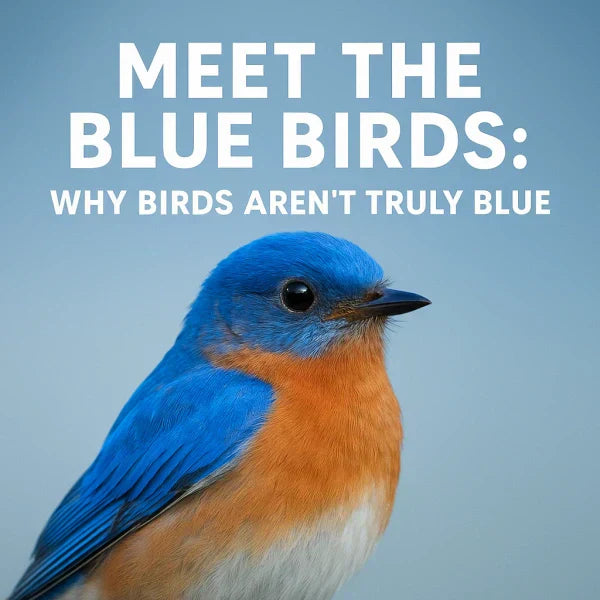Introduction
Watching wild birds gather in your backyard is one of life’s simple joys. The flutter of wings, cheerful songs, and bursts of color can turn even an ordinary yard into a lively sanctuary. All it takes is a good feeder and the right food — but finding the best seeds for birds isn’t always easy.
With so many choices on the market — from cheap mixes packed with fillers to nutrient-rich blends that birds actually love — it’s easy to feel unsure about what to buy. That’s where this guide comes in. It breaks down everything you need to know about choosing the best seeds for birds, so you can attract more feathered visitors and keep them coming back season after season.

Many birds enjoy seeds spread out in a garden, attracting more wild visitors.
Photo by Jay Brand on Pexels
The 5 Best Bird Seeds to Attract More Birds
The best seeds for birds don’t have to be the fanciest or the most expensive. They should match your local bird species, provide balanced nutrition, and stay fresh in your feeders. Here are the five best seeds that are always a hit among birds:
1. Black Oil Sunflower Seeds
If you’re only picking one seed to start with, opt for black oil sunflower seeds, also known as the “B.O.S.S”. According to the Cornell Lab of Ornithology, black-oil sunflower seed is one of the best seeds for wild birds, thanks to its thin shell and high oil content.
These small, thin-shelled seeds are packed with fats and proteins. Their rich oil content keeps the feathers glossy and metabolism strong, further boosting their value. Another reason for their popularity is the soft shell, which makes them easier for smaller birds, such as chickadees, to crack open with their beaks.
Because they take a bit longer to eat, birds tend to linger at feeders stocked with black oil sunflower seeds. Want to make your birdwatching setup even more inviting? Check out our guide on DIY Bird Feeders to build one yourself.

Image by Christine JAMIN from Pixabay
2. White Millet Seeds
White millet seeds are a favorite among ground-feeding birds, such as mourning doves, juncos, and house sparrows. These small, round seeds provide a quick source of energy, especially valuable during migration and breeding seasons when birds need extra fuel.
However, there’s a specific way to feed millet seeds to the birds. You need to scatter the seeds on flat platform feeders or open patches of ground, where species that prefer to feed close to the earth can easily find them. White millet contains several important nutrients, including protein, fiber, calcium, and vitamins that are necessary for the healthy growth of birds.

A Mourning Dove enjoys feeding on white millet seeds
3. Cracked Peanuts
Peanuts are dense in fats, oils, and amino acids, and provide sustained energy for active birds. They’re most popular among woodpeckers, titmice, nuthatches, and blue jays that cannot feed on hard seeds and nuts. Research conducted to investigate food preferences in urban birds revealed that birds were more attracted to peanuts than to cheese and bread.
Larger birds, such as jays and magpies, can peel the shell, while smaller birds, like robins and wrens, prefer shelled peanuts. For best results, use specialized feeders with wider mesh, and make sure the peanuts are unsalted and unroasted.

Image by Ralph from Pixabay
4. Safflower Seeds
If squirrels and grackles are raiding your feeders, safflower seeds might be your best defense. These white, slightly bitter seeds offer a win-win situation, as they are loved by cardinals, chickadees, and titmice, but ignored by pests.
When introducing safflower seeds, don’t be alarmed if your feeders stay untouched for a while. Birds unfamiliar with them may take some time to adjust, but once they do, safflower becomes a favorite, especially for cardinals. Since they are large seeds, they work best on platform and hopper feeders.
5. Shelled or Crushed Corn
Shelled or crushed corn is a classic choice for attracting larger ground-feeding birds. These include quails, juncos, pheasants, and even wild turkeys. Unlike most popular bird seeds rich in proteins and fats, corn provides essential carbohydrates and fiber.
But there’s a slight problem. According to research published on PubMed, corn can sometimes be contaminated with aflatoxins — toxic compounds that pose serious health risks to wild birds. Hence, it’s important to buy high-quality corn from trusted suppliers and inspect it daily for signs of mold.

Photo by Patrícia Nicoloso on Unsplash
Bird Seed Mixes: Are They Worth It?
A well-balanced blend saves you the hassle of making your own mix and attracts a variety of bird species. It provides nutritional diversity, saves time, and caters to different feeding habits. The key lies in picking a blend that contains high-quality ingredients without unnecessary fillers.
Many cheap commercial mixes are loaded with low-value seeds such as milo, wheat, or cracked corn, which most birds ignore. This not only wastes money but also attracts unwanted pests. A nutrient-rich blend ensures you get the best value for money by combining the most popular bird seeds in balanced proportions.

PeckPerk Flaming Hot Wild Bird Food
Among premium bird food options, PeckPerk stands out with its homegrown, high-quality bird seed. It’s suitable for several bird species, from cardinals and woodpeckers to blue jays and wrens. What makes it unique is its chili oil coating, which deters squirrels without harming birds. Squirrels dislike the heat, while birds can’t taste capsaicin at all.
PeckPerk ensures it only includes ingredients that are high in proteins and fats, and are loved by most birds. It mainly consists of sunflower hearts, golden safflower seeds, dehydrated mealworms, and shelled peanuts, all of which contribute to a thriving backyard.

How to Choose the Best Bird Seed (Smart Buying Guide)
In the U.S. alone, nearly 52 million people feed wild birds in their gardens, spending over $2.5 billion each year on bird food. Yet, much of that money is wasted on low-quality seed mixes that birds simply ignore.
Here’s a smart guide to help you choose the best seeds for attracting and nourishing your backyard visitors:
1. Look for High-Nutrition Ingredients
Birds need a balanced diet rich in fats, proteins, and minerals. Before purchasing a seed mix, ensure it includes high-calorie seeds such as black oil sunflower, safflower, and peanuts. These nutrient-rich seeds promote strong feathers and sustained energy, especially during cold weather.

Photo by Patrick on Pexels
2. Avoid Cheap Fillers (Like Oats and Red Millet)
Many inexpensive seed mixes bulk up their product with fillers such as red millet, wheat, and oats. While these seeds make the bag look full, most birds simply toss them aside. Low-quality commercial mixes often contain as much as 70% filler seeds, so always check the label before buying.

Image by NomeVisualizzato from Pixabay
3. Pick Seeds That Are Easy to Eat and Digest
Every bird species has different feeding habits and beak strengths. Smaller birds like finches, chickadees, and nuthatches prefer thin-shelled or soft seeds since they can’t break hard shells. For an inclusive environment, match the seeds to your local birds’ preferences to increase feeder visits and reduce waste.

Photo by Jay Brand on Pexels
4. Skip Artificial Flavors or Dyes
Bright-colored seeds may look attractive on store shelves, but they offer no nutritional value to the birds. In fact, some dyed seeds represent seeds intended for agricultural use, which are treated with fertilizers and chemicals. Always choose natural, unprocessed seeds without added colorants or flavors.
5. Stick With Trusted Brands
Poorly stored or contaminated seed can develop mold, which is harmful to wild birds. Always choose trusted brands that test their products for freshness and nutritional content. Using high-quality, natural ingredients helps keep your backyard birds healthy and active. For a brand like this, you might as well try PeckPerk.

Final Thoughts: Beyond Just the Right Seeds
Choosing the right seeds is the foundation of a bird-friendly backyard. Offering a variety of nutrient-rich options — such as sunflower hearts, safflower, peanuts, and mealworms — helps attract and support a wide range of species throughout the year. Rotating seeds or providing multiple types caters to different feeding habits, keeping your feeders lively and active.
Beyond seeds, providing clean water, safe feeders, and quiet, sheltered spots helps birds feel secure and encourages them to return. During the colder months, offering energy-rich foods can give your backyard visitors the boost they need to stay active and healthy. To learn more about winter feeding, check out our guide: Best Suet for Birds This Fall and Winter.

Image by Ray_Shrewsberry from Pixabay
FAQs About the Best Seeds for Birds
What is the best seed to feed birds?
Sunflower -- will attract the greatest variety of birds. Sunflower seeds are the seeds favored by most seed-eating birds, some 40 species, including cardinals, tufted titmice, Carolina chickadees, house and purple finches, American goldfinches, brown-headed nuthatches, and red-bellied woodpeckers, to name a few.
What seeds are toxic to birds?
Fruit pits and seeds, including apples, cherries, apricots, plums, and peaches, should not be fed to birds due to their cyanide levels. Many birds enjoy eating fruit, but pet parents should carefully remove all seeds or pits to prevent cyanide poisoning.
Is it better to give birds seeds or pellets?
For pet birds, formulated pellets are healthier because they provide balanced nutrition and prevent selective eating. Seeds are high in fat and should only be occasional treats. Wild birds, however, thrive on seeds, nuts, fruits, and insects—so offering a variety ensures both energy and diversity in their diet.
Can birds eat pumpkin seeds?
Birds like blue jays and cardinals enjoy pumpkin seeds as a healthy, nutrient-dense feed. They’re rich in vitamin A, calcium, and natural minerals that boost feather strength and energy. You can hull the seeds for smaller birds to make them easier to eat.
What makes bird seeds go bad?
The most common reason for seed spoilage is moisture and sunlight, which lead to mold, bacterial growth, and loss of nutrients. Mice and other pests can also contaminate bird seeds with droppings and saliva and spoil the stored seeds.
What is the healthiest thing to feed birds?
The healthiest foods for birds include black oil sunflower seeds, high in fat and protein, and fresh fruits and vegetables like berries, leafy greens, carrots, and sweet potatoes. For pet birds, aim for about 60% formulated pellets and 40% fresh produce, with seeds as occasional treats. Wild birds benefit from suet in winter and a mix of seeds, fruits, and mealworms—always fresh and season-appropriate.




Leave a comment
All comments are moderated before being published.
This site is protected by hCaptcha and the hCaptcha Privacy Policy and Terms of Service apply.